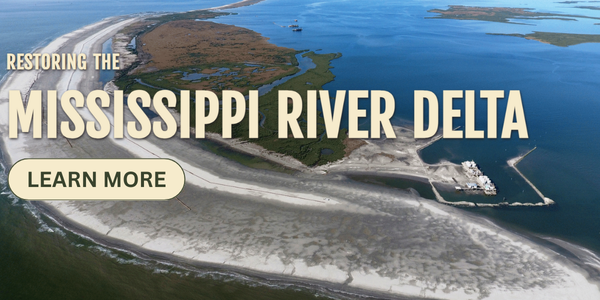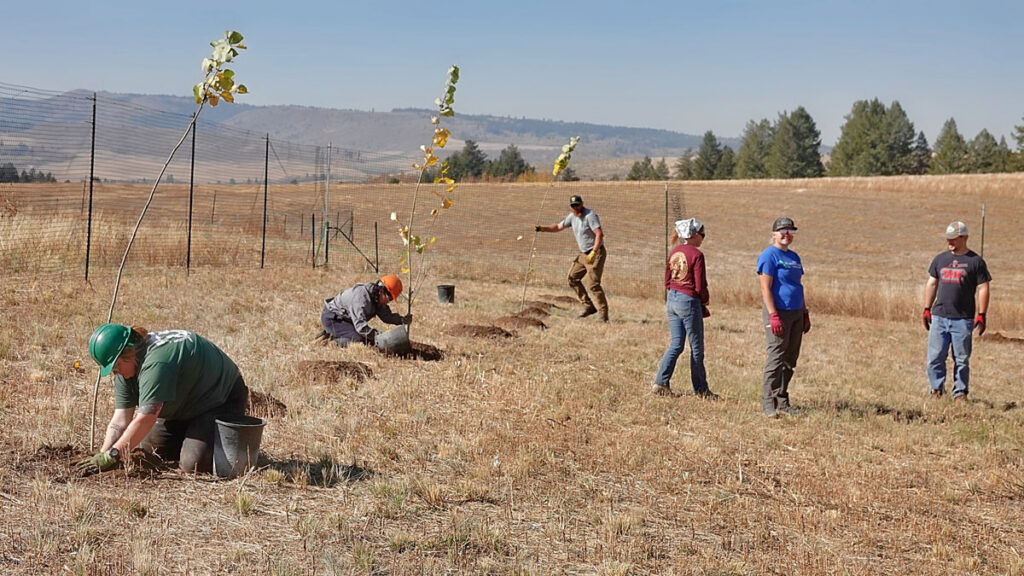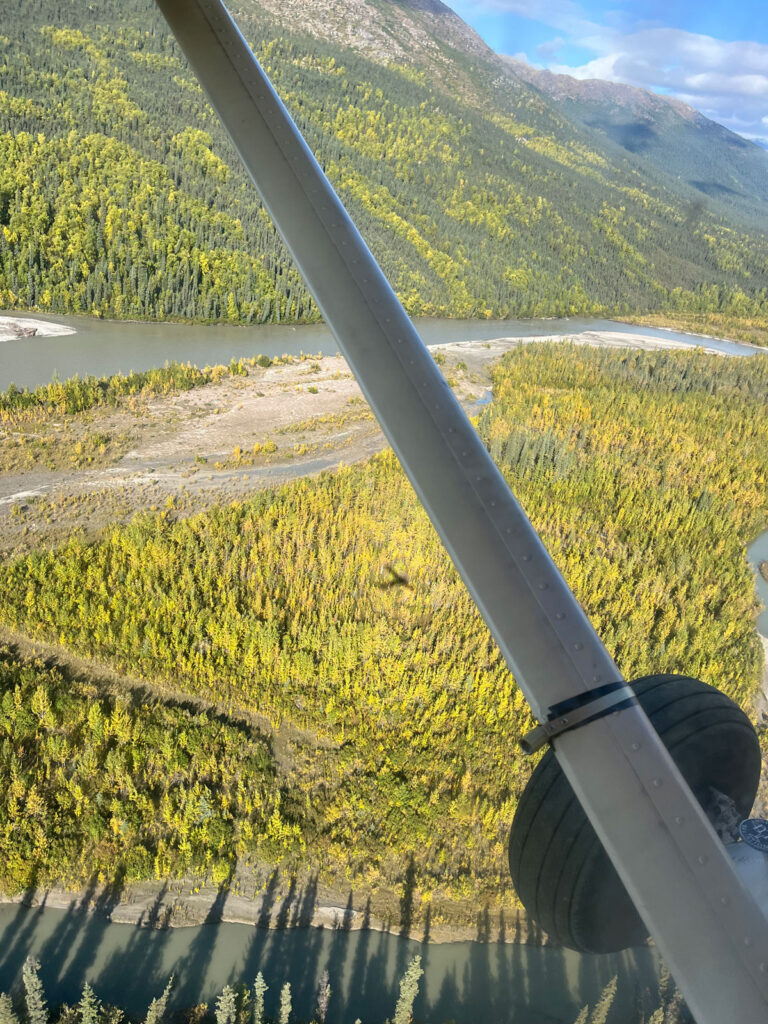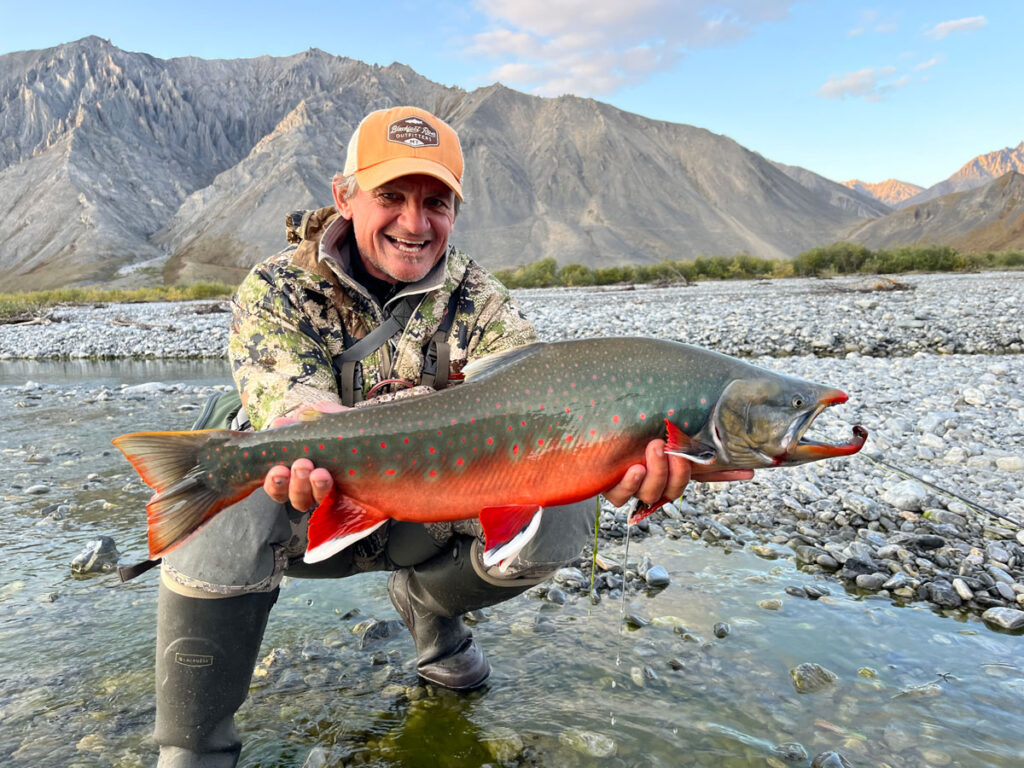Southern Louisiana’s Neptune Pass, which formed naturally during higher river flows since 2018, provides a real-world example of the benefits of sediment diversions for a healthy delta
Neptune Pass didn’t even exist six years ago.
Today, the newest connection between the Mississippi River and its fish and wildlife-generating marshes moves enough water by volume into Breton Sound that it dwarfs all but about 15 other rivers in the world—and it’s a living laboratory for how a healthy, properly functioning Mississippi River is supposed to work.
Located about 70 river miles south of New Orleans and directly across from the world-renowned fishing destination of Buras, La., Neptune Pass was previously a narrow cut, known as a crevasse, in the Mississippi River’s east bank back in 2018, barely wide enough to pass a 24-foot bay boat through. A series of annual floods, especially a record-setting inundation in 2019, forced the river to find and exploit weaknesses in its banks along its lower east bank – an area where the river isn’t hemmed in by flood protection levees and so dozens of other cuts and crevasses exist.

What was a relative trickle of about 5,000 cubic feet per second in 2018 became a major pass by 2023, capturing nearly 120,000 cubic feet of water per second, or more than 15 percent of the total volume of the Mississippi during spring flooding. Almost immediately after its widening, Neptune Pass began delivering enough suspended sediment from river water to begin shallowing and filling in bays and open ponds along its path and at its mouth in Quarantine Bay.
A Natural Process
The Mississippi River was simply replicating the same processes at Neptune Pass that it had employed hundreds, if not thousands, of times over the last several millennia. It utilized a weakness in its bank as an easier way to move its abundant water and sediment toward the Gulf of Mexico. If not for that natural process, most of Louisiana and a large part of Mississippi wouldn’t exist. Preventing that natural process by blocking the river’s connection to its delta with levees is the primary reason more than 2,000 square miles of Louisiana’s delta has already sunk and eroded into the Gulf.
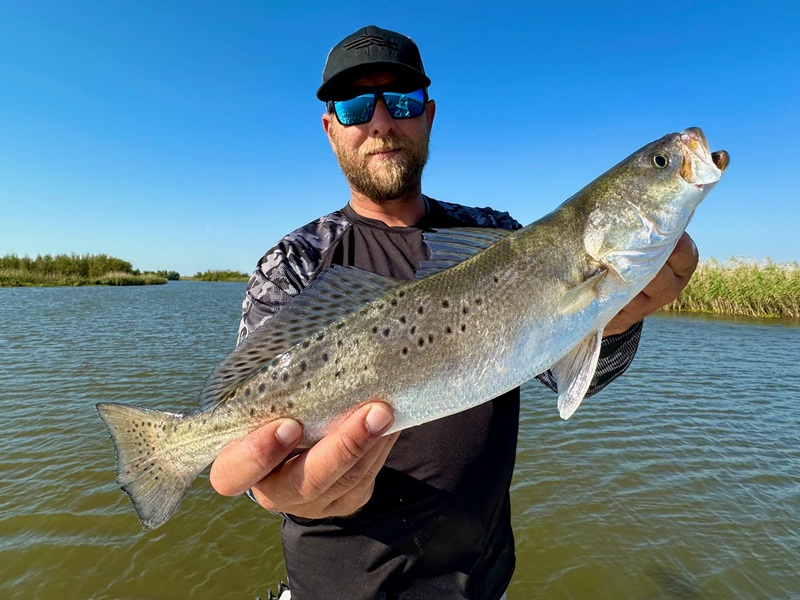
Increased Flows Mean More Fish
The TRCP recently hosted several river-savvy anglers on a two-day fishing and crabbing excursion in the Mississippi River, largely focused on the junction with Neptune Pass. Our goal was to talk about the importance of restoring the functionality of the river, in terms of water and sediment diversions, and see firsthand how effective they are at improving productivity and rebuilding land being lost to rising seas and storms. Regaining more historic flow patterns can occur naturally, as seen at Neptune Pass, or man-made, as TRCP and partners have worked for years to achieve with the Mid-Barataria Sediment Diversion. This project is designed to breathe life back into the Barataria Basin by reconnecting the Mississippi River to the marshes, bayous, and islands it originally built, but through a gate on the river that can be regulated to optimize sediment and water flows.
If not for the sediment delivered by the Mississippi River, most of Louisiana and a large part of Mississippi wouldn’t exist.
Whether a natural or dredged river diversion, the results are the same. More oxygenated water, more nutrients, more land-building sediment, and more fish and wildlife. The anglers we hosted earlier this month – representing YouTube channels Outside the Levees, Cole & Jay, Marsh Man Masson, and River Certified – reaped the benefits as they hauled in boatloads of redfish, black drum, catfish, and blue crabs.
The Pass Today
Ducks Unlimited and state and federal agencies have worked with local fishing and duck hunting guide Capt. Ryan Lambert to build terraces in Quarantine Bay and adjacent Bay Denesse. The linear earthen berms act as speed bumps, slowing the water coming from the pass and allowing the sediment to more quickly deposit and form mud and sand flats. As the water shallows, vegetation takes root and marsh emerges, forming perfect habitat for migrating waterfowl and other birds, shrimp and crabs, and a host of sought-after sportfish and gamefish like redfish, black drum and largemouth bass.

The rapid widening and deepening of Neptune Pass quickly became a concern for the Army Corps of Engineers, who worried the changes in river currents would lead to sandbars forming in the main navigation channel of the Mississippi River and even steer ocean-going ships off course. There was talk of efforts to try and completely close Neptune in 2022 – a move that angling, hunting, and conservation groups, including the TRCP, roundly opposed.
After weighing all options and taking into consideration the remarkable habitat-creating capacity of Neptune Pass, the Corps has recommended stabilizing the pass with rocks to try and prevent it from growing larger while still allowing water and sediment to flow through into Quarantine Bay. The land-building capacity would be further enhanced by more terraces, building upon the groundwork laid by Lambert and Ducks Unlimited.
Balancing the needs of navigation, flood control, and the incredibly productive, but dwindling, coastal wetlands in the Mississippi River Delta is something wildlife and fisheries advocates have been demanding from the Corps for decades. Neptune Pass gives hope those pleas are being heard and appreciated.
Aerial Neptune Pass image credit: Restore the Mississippi River Delta; all other images credit Chris Macaluso, TRCP

